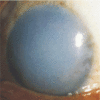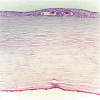Characteristics of corneal dystrophies: a review from clinical, histological and genetic perspectives
- PMID: 27366696
- PMCID: PMC4916151
- DOI: 10.18240/ijo.2016.06.20
Characteristics of corneal dystrophies: a review from clinical, histological and genetic perspectives
Abstract
Corneal dystrophy is a common type of hereditary corneal diseases. It includes many types, which have varied pathology, histology and clinical manifestations. Recently, the examination techniques of ophthalmology and gene sequencing advance greatly, which do benefit to our understanding of these diseases. However, many aspects remain still unknown. And due to the poor knowledge of these diseases, the results of the treatments are not satisfoctory. The purpose of this review was to summarize the clinical, histological and genetic characteristics of different types of corneal dystrophies.
Keywords: clinic; corneal dystrophy; gene mutation; histology.
Figures





References
-
- Laibson PR, Krachmer JH. Familial occurrence of dot (microcystic), map, fingerprint dystrophy of the cornea. Invest Ophthalmol Vis Sci. 1975;14(5):397–399. - PubMed
-
- El Sanharawi, Sandali O, Basli E, Bouheraoua N, Ameline B, Goemaere I, Georgeon C, Hamiche T, Borderie V, Laroche L. Fourier-domain optical coherence tomography imaging in corneal epithelial basement membrane dystrophy: a structural analysis. Am J Ophthalmol. 2015;159(4):755–763. - PubMed
-
- Charles NC, Young JA, Kumar A, Grossniklaus HE, Palay DA, Bowers J, Green WR. Band-shaped and whorled microcystic dystrophy of the corneal epithelium. Ophthalmology. 2000;107(9):1761–1764. - PubMed
-
- Cogan DR, Kuwabara T, Donaldson DD, Collins E. Microcysticdystrophy of the cornea: a partial explanation for its pathogenesis. Arch Ophthalmol. 1974;92(6):470–474. - PubMed
Publication types
LinkOut - more resources
Full Text Sources
Other Literature Sources
Molecular Biology Databases
